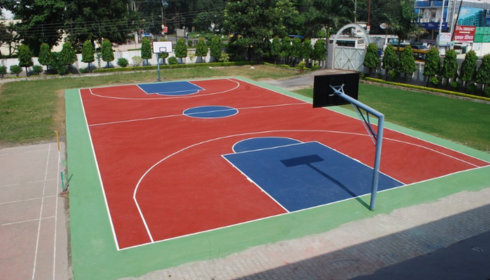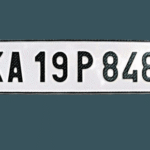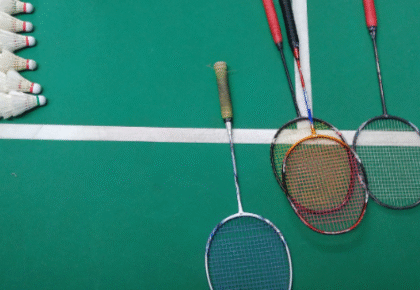Whether you’re planning to build a school gym, a community sports area, or a professional-level arena, the right basketball court flooring is fundamental. The flooring not only affects player safety and ball bounce but also determines how long the surface will last under different usage and environmental conditions.
This guide provides a comprehensive comparison of indoor and outdoor basketball court flooring materials, their construction requirements, performance benefits, and associated costs in India.
Why Basketball Court Flooring Matters
Basketball is a sport that demands speed, sudden movements, and repetitive jumping. The flooring must support athletic performance while reducing the risk of injury. Poor flooring can lead to player fatigue, knee and ankle injuries, and uneven ball bounce.
Key factors to consider when selecting flooring:
- Shock absorption: Protects joints and improves comfort
- Surface uniformity: Ensures consistent ball bounce and player movement
- Slip resistance: Prevents falls and injuries
- Durability: Withstands wear and tear over years of usage
- Maintenance: Ease of cleaning and resurfacing
Indoor Basketball Court Flooring
Indoor basketball courts are generally used in schools, universities, training academies, sports clubs, and indoor arenas. Since these courts are protected from weather, the focus is on performance, player comfort, and aesthetics.
Common Indoor Flooring Materials:
1. Maple Wood Flooring
This is the standard for high-end indoor courts (such as NBA courts). It provides excellent ball response, aesthetic appeal, and long-term durability if maintained well.
- Lifespan: 10–15 years
- Maintenance: Periodic sanding and resealing required
- Best for: Professional training and competitive indoor arenas
2. PU (Polyurethane) Sports Flooring
PU is a synthetic seamless system with built-in cushioning. It’s ideal for schools and multi-use facilities where various sports are played on the same court.
- Impact absorption: High
- Maintenance: Easy to clean, recoatable after wear
- Best for: Institutional and commercial multi-sport spaces
3. Vinyl Sports Flooring
Made of multi-layered PVC, vinyl floors are affordable and functional. They come in sheets or tiles and offer decent shock absorption and slip resistance.
- Advantages: Budget-friendly, available in different colors and patterns
- Best for: Budget projects or temporary indoor courts
4. Engineered Wood
An alternative to solid wood, engineered wood offers a similar appearance with moderate performance and easier installation.
- Less expensive than maple but not suitable for high-competition courts
Cost of Indoor Basketball Court Flooring (INR per sq. meter):
- Maple Wood: ₹1500 – ₹2500
- PU Sports Flooring: ₹700 – ₹1200
- Vinyl Flooring: ₹500 – ₹850
- Engineered Wood: ₹1000 – ₹1800
Total court size: Full-size basketball court is approximately 420 sq. meters
Indoor court cost range: ₹2.5 lakhs to ₹10+ lakhs depending on material
Outdoor Basketball Court Flooring
Outdoor basketball court flooring is commonly found in schools, public parks, societies, and sports academies. Since they are exposed to rain, heat, and UV rays, the flooring must be tough, weatherproof, and low-maintenance.
Common Outdoor Flooring Materials:
1. Synthetic Acrylic Flooring
Acrylic flooring is a cost-effective, weather-resistant surface system applied over concrete or asphalt. It is slip-resistant, UV-stable, and ideal for outdoor use.
- Surface layers: Primer coat, cushioning layer (optional), top coat, and line marking
- Best for: Recreational courts, schools, and society parks
2. Rubberized Flooring (EPDM or SBR)
These rubber-based materials are commonly used in playgrounds and are suitable for casual basketball courts. They offer a soft surface but are not ideal for professional ball bounce.
- Best for: Children’s areas and informal courts
3. Modular Interlocking Tiles
These polypropylene tiles are easy to install, UV-resistant, and allow water drainage through gaps. They are low-maintenance and can be customized in color and design.
- Reusable and movable
- Best for: Temporary setups, multi-purpose outdoor courts
Estimated Cost of Outdoor Basketball Court Flooring (INR per sq. meter):
- Synthetic Acrylic: ₹350 – ₹600
- Rubberized Flooring: ₹500 – ₹850
- Modular Tiles: ₹400 – ₹700
Outdoor court cost estimate:
For a full-size court (420 sq. m), outdoor installation may cost between ₹1.5 lakhs to ₹3.5 lakhs, depending on the chosen surface and site conditions.
Indoor vs Outdoor Basketball Court Flooring: Side-by-Side Comparison
| Criteria | Indoor Courts | Outdoor Courts |
| Main Materials | Maple, PU, Vinyl, Engineered Wood | Acrylic, Rubber, Modular Tiles |
| Bounce Quality | High (Maple/PU) | Medium to High (depends on base prep) |
| Slip Resistance | Controlled environment | Critical (weatherproofing essential) |
| Weather Resistance | Not required | Must resist UV, rain, and temperature |
| Maintenance | Polishing, deep cleaning | Regular sweeping, occasional recoating |
| Approx Installation Cost | ₹800 – ₹2500/sq. m | ₹350 – ₹800/sq. m |
| Lifespan | 10–15 years (with maintenance) | 5–10 years |
Choosing the Right Option: Based on Use and Budget
For Competitive Indoor Play:
Choose Maple Wood for the best performance, or PU flooring for multi-sport usage.
For Institutional Indoor Use:
PU or Vinyl Flooring offers a balance between cost and comfort.
For Outdoor Community Courts:
Acrylic is the best value, offering durability and performance at a lower cost.
For Budget Projects or Temporary Use:
Modular Tiles provide flexibility and are easy to manage.
Final Thoughts
Selecting the right basketball court flooring depends on usage type (recreational vs. professional), location (indoor vs. outdoor), and budget. Indoor surfaces demand advanced performance and shock absorption, while outdoor courts prioritize weather resistance and surface toughness.
Always consult experienced flooring professionals before installation. Proper surface preparation, drainage, and finishing are critical for the longevity of any basketball court, regardless of material.
If you’re planning a project and want a long-lasting, low-maintenance, and player-safe court, invest time in evaluating all options based on real usage needs.




